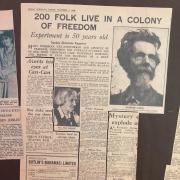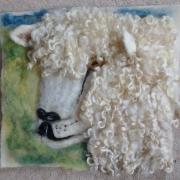Lady B's no-nonsense banter from Cirencester Park
The harvest is nearly in. Well, to be honest, the arable harvest has been in for couple of months. In fact, it was all placed in the grain stores in fairly quick order this year.
But the maize harvest is still in motion and up and down the Cotswolds, farmers are busy cutting the tall stems and processing it for cattle feed, for human consumption, or as an important ingredient for anaerobic digesters.
Harvest has been a peculiar event this year. While we have all generally been basking (or melting – it depends on how one views the heat) in the searing temperatures of the summer, the challenges for harvest teams have been very real.
For farming folk, this is basic stuff, so forgive me if I’m going over old ground – what a dreadful pun – but when taking the crops off the fields, it’s not just a case of whacking a combine through the gate and getting on with it. There is a complicated science behind a successful harvest, and the balance a delicate one. Get it right and it’s wonderful, but get it wrong and things can go pear-shaped faster than a hare escaping the teeth of the thresher.
Moisture content is paramount. For those of you who are interested in this type of thing, the optimal moisture harvesting content in wheat is around 15-20%, and then it will be dried to around 12-13% for storage. Any more than that and a farmer will be docked, as well as face the dangers of mites or fungi, resulting in the potential rejection of the grain.
Usually, as farmers, we spend a great deal of time worrying about moisture content and waiting for it to get to a level where it is safe to harvest, working only to a certain time in the evening as the air cools and damp forms. But this year it has been exceptionally challenging. Harvesting during the day has been almost impossible due to the heat, and we have been gathering the crop in the wee hours to take advantage of what little moisture in the air there has been.
There has been barely any need for drying, so the grain has been checked, weighed, and put away safely into the storage units. On the upside, the carbon footprint of this year’s harvest has been significantly reduced, which can only be a bonus.
But farmers have had to face other problems this summer. Due to the deep drought, the grasses have not grown, and the livestock have remained hungry – so the feed stores, normally reserved for the winter, have been dipped into. This is highly unusual and will pose a significant financial worry for farmers across the country, as they may well have to turn to animal feed suppliers, rather than use their own haylage and silage.
The price of grain, which has risen sharply due to the war in Ukraine, will make these feeds impossibly expensive and so, while we all believe the farmers have had a bumper year, we need to spare a thought for the ones who will have to subsidise their animals feed with purchased food.
The knock-on effect of this will hurt us all. The cost of producing animals will go up, so the cost of food will also rise. It’s been a perfect storm and, with the impending threats of energy prices rocketing, we are all going to have tighten our belts this winter.
Farming is never a sure thing; Mother Nature gives with one hand and takes away with the other. Those who work our fields and pastures – feeding our nation – should be applauded.
As Jeremy Clarkson said in his wonderful series, ‘If you see your local farmer in the pub, buy him a pint.’ That’s good advice, and I’m sure they’ll appreciate it.
Follow Lady B on Twitter: @CotswoldLadyB



























